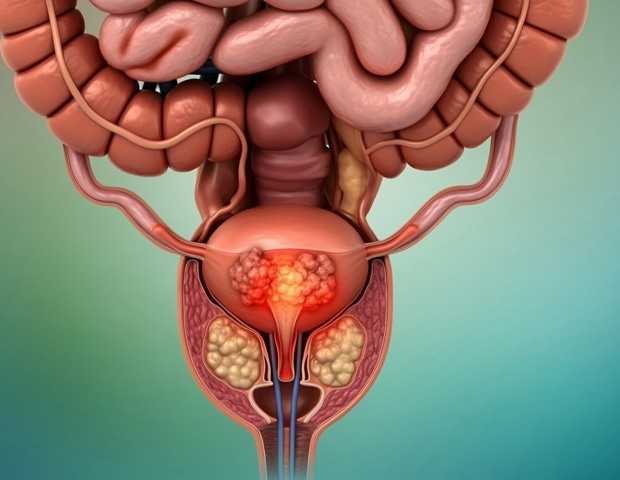A new WHO analysis reveals accelerating resistance in critical pathogens and widening global inequities, urging countries to strengthen surveillance, expand access to essential antibiotics, and act now before routine infections become untreatable.
Global antibiotic resistance surveillance report 2025. Image Credit: Kateryna Kon / Shutterstock
In a recent report from the AMR Division of the World Health Organization (WHO), scientists discussed the results of a global effort to monitor antibiotic resistance. Their findings highlight persistently high and uneven levels of antibiotic resistance worldwide, with significant disparities between regions. Countries with lower incomes and weaker diagnostic and surveillance infrastructure, which are less able to invest in systematic monitoring, are disproportionately affected.
Countering a Global Threat
AMR poses a growing global health threat that reduces the effectiveness of life-saving treatments and undermines modern medicine. The WHO established the Global Antimicrobial Resistance and Use Surveillance System (GLASS) in 2015 to collect and analyse standardized AMR data, and it later expanded in 2020 to include antimicrobial use (AMU). The 2025 report draws on modelled estimates from more than 23 million bacteriologically confirmed infections across 104 countries, covering 22 antibiotics and eight major bacterial pathogens.
These estimates account for variations in population and surveillance coverage, providing adjusted national, regional, and global resistance patterns. The report also introduces a structured scoring framework to assess the maturity and completeness of national AMR surveillance systems.
Global Expansion of AMR Surveillance
Since 2016, participation in GLASS has grown fourfold, with 127 countries enrolled and 104 submitting AMR data, now covering over 70% of the global population. The number of infections assessed for antimicrobial susceptibility has increased, particularly for urinary tract, bloodstream, and gastrointestinal infections, indicating broader surveillance uptake.
However, participation remains uneven across regions. The Americas and Western Pacific show the lowest engagement, and only about half of the reporting countries have all the essential components of surveillance. Global data completeness remains at just 53.8%, highlighting major gaps in representativeness. Many low-resource countries still lack adequate laboratory infrastructure and automated or molecular testing, limiting both data quality and treatment guidance.
Widespread and Uneven Resistance Patterns
In 2023, approximately 17.2% of laboratory-confirmed bacterial infections globally involved antibiotic-resistant pathogens. This is equivalent to around one in six cases when assessed across infection, pathogen, and antibiotic combinations, although the burden varies markedly by infection type. Urinary tract and bloodstream infections exhibited the highest resistance, while gastrointestinal infections showed comparatively lower resistance.
Resistance levels were highest in South-East Asia and the Eastern Mediterranean (around one in three combinations) and lowest in the Western Pacific (around one in eleven). Common Gram-negative pathogens, including Escherichia coli and Klebsiella pneumoniae, showed extensive resistance to third-generation cephalosporins and fluoroquinolones, with resistance rates exceeding 70% in some African settings. Resistance to carbapenems was particularly concerning in Acinetobacter species, with a global rate of 54.3%. Methicillin-resistant Staphylococcus aureus (MRSA) remained prevalent, affecting 27.1% of bloodstream infections.
Gonorrhoeal infections demonstrated near-universal resistance to fluoroquinolones (75%), although ceftriaxone resistance remains low. The report warns that emerging ceftriaxone resistance could jeopardize the last reliable empirical therapy for gonorrhoea.
Rising AMR Trends and Systemic Inequities
Between 2018 and 2023, AMR increased in 40% of monitored pathogen, antibiotic combinations, with the steepest rises in Gram-negative bacteria such as E. coli, K. pneumoniae, and Acinetobacter spp., with annual increases of up to 15%. Resistance to carbapenems and fluoroquinolones is increasingly limiting treatment options and forcing reliance on costly intravenous and last-resort antibiotics.
Countries with limited surveillance capacity reported the highest resistance levels, reflecting a syndemic interaction between AMR and weak health systems. Many observations are affected by selective sampling in tertiary hospitals, where the most severe cases are tested, potentially inflating resistance estimates.
Low- and middle-income countries (LMICs) bear a disproportionate burden, where poor diagnostics and overreliance on Watch antibiotics drive resistance. In 2022, Access antibiotics accounted for only 52.7% of global use, far below the 70% target for 2030, while Watch antibiotics comprised 45.3%, signalling inadequate stewardship.
Priorities to Strengthen Global Action
Countries must now accelerate efforts to strengthen national surveillance systems, guarantee complete and representative data, and commit to regular public reporting by 2030. WHO urges investment in laboratory capacity, digital platforms, and integration of surveillance into national decision-making, especially in underrepresented high-burden regions.
To combat escalating Gram-negative resistance, countries must reduce Watch antibiotic use, increase Access antibiotic usage to at least 70% by 2030, and expand equitable access to Reserve agents. Scaling up diagnostics, infection prevention, sanitation, vaccination, and stewardship programmes is essential.
As AMR disproportionately affects LMICs, governments should embed AMR control within broader strategies for universal health coverage, health system strengthening, and health equity. Sustained domestic investment, supported by global funding mechanisms, is essential for long-term resilience.
Conclusions
Addressing concerning trends and inequities in antibiotic resistance requires robust surveillance, improved diagnostic capacity, context-specific interventions, and equitable access to effective antibiotics. Without urgent action, AMR threatens to erode decades of medical progress.
Source:
- Global antibiotic resistance surveillance report 2025: WHO Global Antimicrobial Resistance and Use Surveillance System (GLASS). Geneva: World Health Organization; 2025. License: CC BY-NC-SA 3.0 IGO, https://www.who.int/publications/i/item/B09585

.jpeg)























.jpeg)














 English (US) ·
English (US) ·